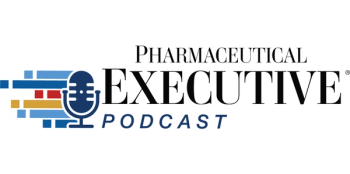
New Product Launch Playbook: Shaking up Status Quo in Pharma Marketing
In this demanding environment, yesterday’s product launch playbook can no longer be relied upon to yield the expected patient or business outcomes, writes Boris Bogdan.
Launching new pharmaceutical products in today’s market can be challenging. A growing emphasis on specialty therapeutics is leading to higher costs and an increased focus on value and outcomes. Meanwhile, digitally-empowered patients are taking a more active role in their healthcare decisions and holding companies to a higher standard when it comes to personalization, experience, and quality of care. In this demanding environment, yesterday’s product launch playbook can no longer be relied upon to yield the expected patient or business outcomes. To address this, the next generation marketer will need to be business growth strategists and not simply execution tacticians.
Many pharmaceutical companies have not evolved their approach to match this new reality-and cracks are beginning to show. In addition to a growing gap between sales forecasts and tighter SG&A budgets in developed markets, many drugs are underperforming. Between 2012 and 2016, 15 New Molecular Entity (NME) approvals missed analyst sales forecasts for two years following launch.
To help pharma marketers upgrade their product launch playbook, Accenture conducted a
We also uncovered a pervasive lack of understanding surrounding new pharmaceutical products and services. One-quarter of individuals who participated in our survey said they had little to no knowledge of new products coming to market.
Finally, our research showed that most patients who consider a new treatment will end up switching. Of the 47% of respondents who said they had thought about switching, 62% ultimately made a change.
Keeping these insights in mind, what’s the recipe for successful product launches in today’s market?
- Lead with evidence: Since patients are more concerned with outcomes than with an affinity toward a brand, pharma companies should prioritize evidence-based solutions that address the unique pain-points of target populations: life context, experience, and value. In fact, outcomes should be a key focus at every stage of the development process, from clinical trials through commercialization. For this to happen, companies must invest in advanced analytics capabilities, while facilitating data sharing between patients, providers, and payers.
- Work to bridge understanding gaps: As noted above, knowledge is critically important for empowered patients. It would be a grave mistake to assume that all patients seek and absorb information in the same way or that they understand industry and clinical jargon. Salespeople have an important role to play in helping healthcare providers articulate care regimens in simple, digestible language, utilizing the communications channels that resonate with each population. Reinforcing the HCP to patient dialogue will not only yield better relationships, but will correlate to better health outcomes. Good for all.
- Harness the power of data and analytics: The importance of data and analytics cannot be overstated. Without data-driven insights, pharmaceutical marketers will be unable to provide the personalized experience that today’s patients expect. Market insights across populations, disease areas, and HCP and patient experiences can unlock new levels of value for the business, while driving more informed resource allocations. For that reason, it is crucial that pharmaceutical companies assess their analytics capabilities across R&D, medical, patient services, and commercial functions-making new investments where needed.
As pharmaceutical companies start the process of updating their product launch playbook, it’s important that they take generational differences into account. Our research shows that Millennials, Gen-Xers, and Baby Boomers have very different preferences when it comes to how they access and consume information about new pharmaceutical products. For example, younger generations are nearly two times more likely than Baby Boomers to try a new product based on something a peer posted on social media.
Pharmaceutical companies with a multi-national presence may also want to develop country-specific product launch strategies. For instance, outcomes-based messaging might be more effective in the United States, where 76% of patients say benefits are a major factor when considering a new product.
These generational and geographic differences should not be taken lightly by pharmaceutical companies: they can mean the difference between meeting patient and sales expectations and falling short of projections.
The results of our research could not be clearer. To succeed, pharmaceutical marketers must be architects of growth. That starts with abandoning the old launch playbook in favor of a more targeted, evidence-based approach specific to the individual product. At the same time, an investment in data analytics will allow companies to tailor strategies to the unique needs, preferences, and motivations of patient sub-segments. This will this be a differentiator for companies, enabling them to seize a greater market share and providing the best possible outcomes for patients.
Boris Bogdan, M.D., a managing director in Accenture’s Life Sciences practice.
Newsletter
Lead with insight with the Pharmaceutical Executive newsletter, featuring strategic analysis, leadership trends, and market intelligence for biopharma decision-makers.





